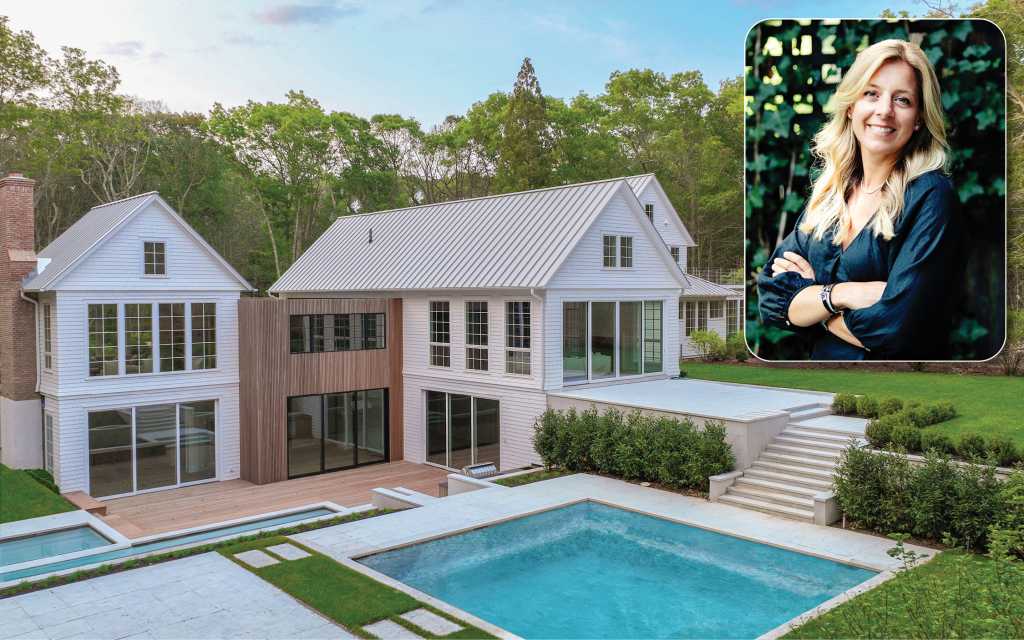Parrish Art Museum Aglow with New Keith Sonnier Exhibition

In 1898, through a relatively simple experiment, British chemists William Ramsey and Morris Travers discovered the chemical element neon. A French chemist, Georges Claude, discovered in 1902 that, with an electric charge, this rare gas produced light. Eight years later Claude displayed his first neon lamp in Paris; in 1905 he patented the neon lighting tube; and in 1923, his company, Claude Neon, sold its first neon sign in the U.S., to the Packard car dealership in Los Angeles.

Sometime in the mid-1930s, Czech artist Zdeněk Pešánek was commissioned by the Electric Company of the City of Prague to decorate their new building. Part of this installation, called One Hundred Years of Electricity, is believed to be the first use neon in an artistic context.
The East End itself is no stranger to neon sculpture as art. Consider the beloved “Sag Harbor” neon patiently waiting in storage to be returned its to rightful place on the Sag Harbor Cinema or the Dan Flavin Institute in Bridgehampton. Now, the Parrish Art Museum is getting in on the mix with its newest exhibition, Keith Sonnier: Until Today, featuring the artist’s neon sculpture—including a site-specific neon installation and work rarely shown in the U.S.—as well as sound pieces and large-scale sculptures influenced by his deep interest in other cultures. It’s also the artist’s first solo exhibition in 35 years in an American museum. “The Parrish is thrilled to have the opportunity to bring the full arc of Sonnier’s career to light,” Museum Director Terrie Sultan noted. “Not only is Sonnier one of the most innovative artists working in the United States today, his creativity is an inspiration to entirely new generations of artists.”

While neon sculpture makes up the bulk of the exhibition, it’s not only the medium on display. The two earliest pieces in the exhibit, for example, contain no neon at all. “Rat Tail Exercise” (1968), created from simple string, latex, rubber and flocking, shows a dynamic shape through minimal use of line, while “Untitled” (1967), a 22-section sewn-satin object, rests low on the floor yet takes command of the surrounding architecture of the room. That command is not by accident. This idea of how we experience sculpture within architecture and how that space becomes a component of sculpture, is a prominent theme in Sonnier’s work.
Take for example the first piece a vistitor encounters. “Rectangle Diptych” was created specifically for the space it occupies in the Parrish’s large open foyer. Sonnier took the design of the room—its size, its many large windows, the fact that the outside world is in full view—into consideration when deciding on the scale, composition and colors of the piece.
Sonnier’s early interests included the fields of conceptual, post-minimal video and performance art. As those interests expanded in the 1970s the artist created groundbreaking work in sound and video transmission, experimental film and surveillance works such as “Quad Scan” (1975), a sound/process piece created from a scanner, telephone speaker and radios on view in the hallway between the two main rooms of the exhibition. One has to put one’s ear to the speakers in order to hear sound and think about how, due to the nature of the piece, no two people will ever experience this artwork in the same way.

It’s the combination of so many disparate pieces that makes this exhibition so enjoyable and exciting. Keith Sonnier: Until Today is the first such exhibition to consider the full extent of Sonnier’s work, and features more than 30 works that reveal his diverse output from 1967 to the present. It was no small task for guest curator Jeffery Grove, but he pulls it off marvelously. “Keith Sonnier has forged a singular sculptural language that defies easy categorization,” Grove says. “With a sensitive and idiosyncratic understanding of materiality and physicality, he has consistently produced work that’s at once surprising in its originality and generous in spirit.”
Keith Sonnier: Until Today is on display through January 27, 2019 at the Parrish Art Museum, 279 Montauk Highway, Water Mill. 63-725-2118, parrishart.org




